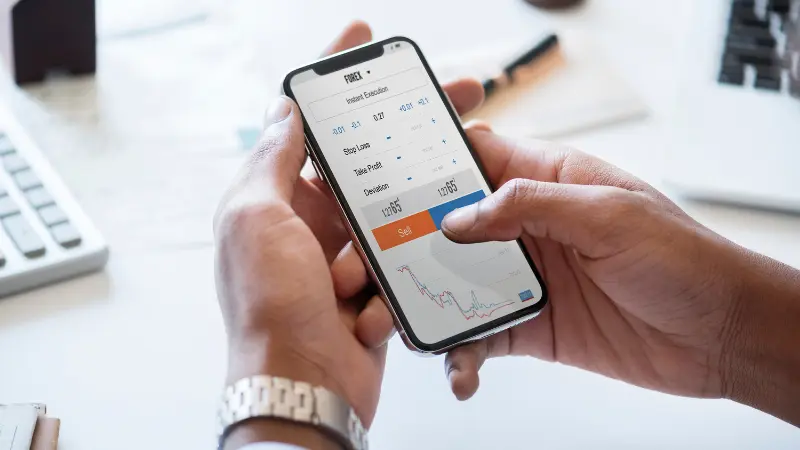
If you are an experienced investor, chances are that you may have come across the term ‘Margin trading’. While most investors trade with their own funds, there are also those who borrow to trade. The concept of margin trading involves borrowing funds to invest in financial securities. The stocks that are bought using borrowed funds act as a collateral towards the loan. The idea behind borrowing money for buying stocks is to make use of more capital for investment and aim for higher profits.
By leveraging securities that are part of an investor’s portfolio, he/she can purchase more securities, sell them short, etc under margin trading. Although it comes with many benefits, an investor must do a critical analysis before setting up a margin trading account.
Here, we will explain the concept of margin trading in further detail while highlighting some of the associated risks and benefits.
What does margin trading mean?
Margin trading is essentially buying on a margin or by borrowing money. The borrowed funds can be used to invest in stocks, ETFs, bonds, etc. In the process of buying these instruments, the investment itself acts as a collateral for the borrowings. Margin trading is often used by investors to significantly increase their purchasing power.
Let’s understand how margin trading works: An investor wants to buy Rs. 10,000 worth of ‘Company A’ stocks. For this, he pays Rs. 5,000 in cash. For the remaining Rs. 5,000, he decides to buy the stocks on margin. His investment then increases in value by 25% to Rs. 12,500. Thus, the actual return on investment is 50%, since the cash used from his own funds was only Rs. 5,000.
While this example showcases the result in case of profits, margin trading can also result in higher losses, just like higher profits. If an investor invests Rs. 10,000 and the value decreases by 25% to Rs. 7,500, he will effectively incur a loss of 50% on the trade.
Who can do margin trading?
To invest through margin trading, an investor needs to have a margin account with a broker. The available margin may vary across brokers. An investor must pay the minimum amount required while opening a margin account and maintain a minimum balance in the account at all times. Failure to do so may result in the trade getting squared-off. It is mandatory to square off positions at the end of every trading session.
How is margin trading beneficial to investors?
Some of the benefits of margin trading are listed below:
- Investors who want to make profits from short-term price movements but do not have sufficient cash on hand can benefit from margin trading.
- It allows leveraging of positions in securities other than derivatives.
- With margin trading, investors can maximise returns on the capital invested.
- It allows investors to utilise the securities that are held in their demat accounts or within an investment portfolio as collateral.
- Margin trading is regulated and supervised by stock exchanges, along with SEBI for investor protection and risk mitigation.
Recommended read – How to analyse a stock to invest better?
What are the risks involved in margin trading?
Although margin trading may sound simple, it can be a highly complex process with higher levels of risk involved. Therefore, all activities related to margin trading have to be performed via a margin account. Some of the commonly observed risks involved in margin trading are:
1.Margin maintenance
To ensure that a margin account has sufficient balance to meet the margin maintenance expectations, brokers may ask investors to add funds into a margin account. This is known as a margin call. In case an investor incurs large losses due to underperforming assets, the margin account may not have sufficient funds as per maintenance levels. Thus, the investor may have to sell part or all of the assets or add more funds to match up to the margin requirement levels.
2.Risk of liquidation
A margin loan agreement has certain terms and conditions. This may allow a broker the right to recover funds from an investor in case the latter does not fulfill any promise as per the contract. Thus, in case an investor does not meet a margin call, the brokerage firm has the right to liquidate the investor’s assets that may be remaining in the margin account.
3.Higher quantum of losses
As mentioned earlier, margin trading can heighten an investor’s gains, but it can also amplify losses. There are chances that investors lose more than their original investment amount. Just as any borrowings from banks and lending institutions may bind borrowers, borrowing from brokers for margin trading can be equally binding. This can result in financial distress for investors who have significant borrowings but have incurred losses in margin trading.
Important factors to note on margin trading
Here are some important points that investors must note while margin trading. These can help in containing losses and maximising gains:
1.Invest wisely
While margin trading, investors should avoid investing amounts that they cannot afford to lose. As discussed earlier, margin trading can amplify losses. Therefore, it is best to invest only if they have enough funds to cover a temporary loss and meet a margin call if needed.
2.Borrow small portions
In margin trading, an investor may have access to additional capital. However, it is wise to use this capital judiciously instead of investing all the available funds in every possible stock in the market. It is advisable to invest small amounts if an investor is just starting off with margin trading. As one gains experience and enough skills, it can be easier to search and invest in riskier but rewarding stocks with higher amounts of capital.
3.Aim for short term borrowing
A margin loan works in the same way as any other loan or borrowing. Just like in loans, the margin account holder must pay interest charges on the margin balance. The longer the time taken to repay the loan and the more the borrowings, the higher the interest expenses. This cost must be taken into account while arriving at actual profits made from margin trading.
Conclusion
While margin trading can benefit investors by allowing higher purchasing power for expanding their investment, it also comes with extra risks as compared to regular trading. Thus, an investor should use this mode with extra caution. It is best to not invest money that one cannot afford to repay in case of losses.
Investors who want to make the most of margin trading should plan in advance, for instances like margin calls. If carried out efficiently, margin trading comes with several benefits, one being portfolio diversification.
FAQs
- Can mutual funds be bought through margin trading?
It is not possible to buy mutual fund units through margin trading due to the unique trade mechanism involved. Mutual fund units cannot be traded like stocks, as these have to be bought or redeemed through fund houses. Also, since fund prices are calculated after the market closes at the end of a working day, it is not possible to margin trade mutual funds.
- Can I buy any stock I want with margin trading?
The SEBI regulates the list of stocks that can be bought/sold through margin trading. Some of the excluded stocks are penny stocks, OTC securities, and IPOs.
- Can I open a margin account with any broker of my choice?
You can open a margin account only with an authorised broker who is registered as per SEBI regulations.
- How do you avoid paying margin interest?
To avoid paying margin interest on margin trades, you must pay for all the trades before settlement. In case you want to withdraw funds, ensure that there is sufficient cash for withdrawal and it does not result in margin loan to avoid interest charges.
- When is a margin call issued?
A margin call is issued by the broker in case the margin account’s value drops below the expectations or set limit.




















